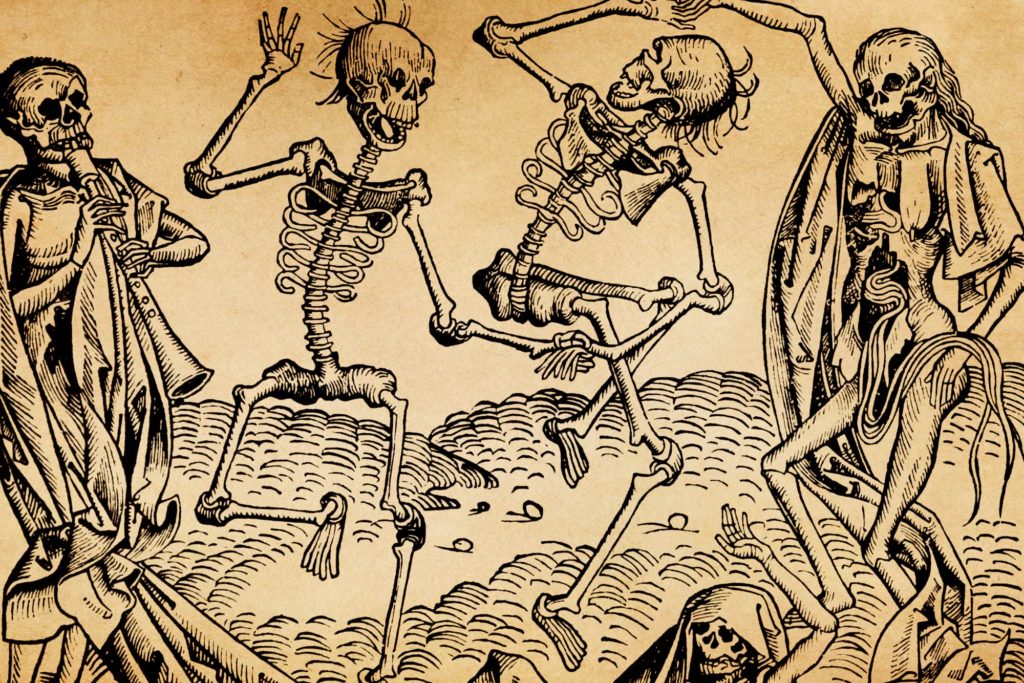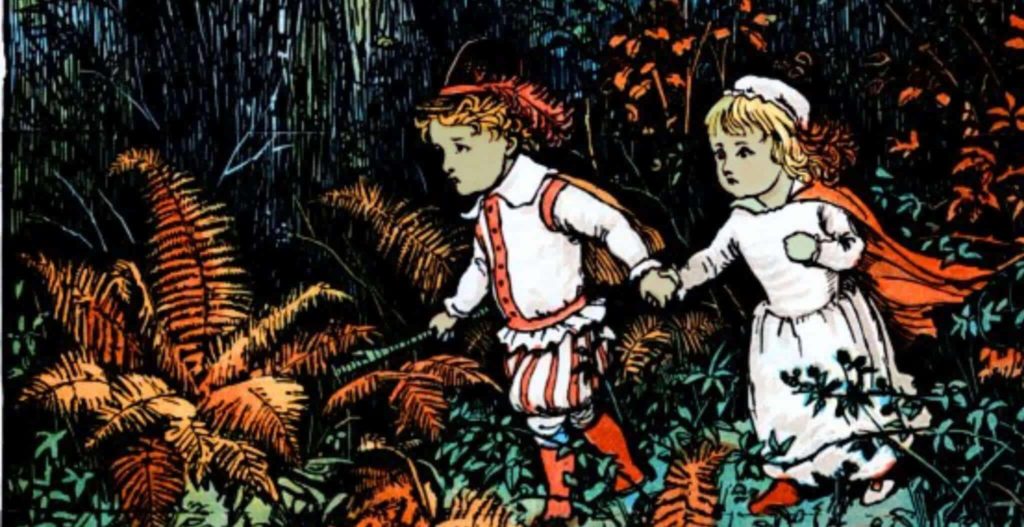Last updated on July 22nd, 2022 at 06:31 pm
The 14th century was an era of new beginnings, new technological advancements and growing empires. However, it was also a time of crisis and transformation for many people.
This period saw the end of the Great Mongolian Empire, which had ruled central Asia for more than a century. It witnessed invasions by new powers like the Teutonic Knights and the Kingdom of Scotland and conflicts between those invaders and local defenders. It also saw many small cities grow into large economic hubs, as they started producing luxury goods for export to other parts of Europe or Asia. But these are all just the tips of the iceberg of this iconic century.
Let’s dive deep into some of the significant events that took place from 1301 to 1400 in Europe, Africa, Asia, and South America, events that changed the world forever.

Europe’s population reached its peak for the next few centuries
Europe experienced a population boom between the 10th and 14th centuries. This was largely due to improved agricultural techniques, which allowed farmers to produce more food with less effort. Many people also had more time to work on the land because of the increased productivity. As a result, between 1000 and 1300, the population of Europe rose massively, from around 56 million in 1000 to 70 million people by 1300.
This was due to a combination of high birth rates and lower death rates and allowed for larger growth, more soldiers in national and country-wide armies, more farmers, expansive culture, and craft and trade. This explosion in population figures is so important because it led to the development of strong states, which helped with defense and expansion.
The Great Famine of Europe 1315-1317
While populations were growing rapidly, that doesn’t mean that this growth didn’t come without consequences or downfalls. For example, between 1315 and 1317, Europe was struck by a severe famine. It’s estimated that one-third of the European population died during the famine.
The famine was caused by a combination of factors that included a prolonged period of cool, wet weather in Europe that coincided with a decrease in use for growing crops. It started around Spring 1315, when an unusually heavy amount of rain fell on the continent, a downpour that continued throughout summer. Grain couldn’t ripen well in these conditions, meaning food shortages began, and even the stocks of straw and hay used to look after and raise animals were suffering. With a lack of food beginning, prices for meals rose; price increases many families could not afford.
Aside from the natural weather reasons, the high population counts also contributed to the severity of the famine, weakening populations which then paved the way for diseases and pandemics like the Black Death.
The Black Death killed millions
The bubonic plague, also known as the Black Death, arrived in Europe in 1347. It quickly spread across the continent, killing millions of people who were already in a poor and weakened state due to poor weather and famine. It’s estimated that a third of Europe’s population was wiped out during the plague.
Fleas carried the disease on rats, which were common in Europe’s cities. The population of these cities had grown rapidly since the Middle Ages, when cities were often small towns. The Black Death is believed to have started in Asia, but it later spread to Europe, Africa, and the Americas during the 14th century. The Black Death was caused by a bacteria called Yersinia pestis, carried by fleas living on rats. These fleas were common in cities where many people were living together in close quarters. Rats are also very common in city streets, so they can spread the disease quickly among humans.
It is believed that rats played a bigger role than fleas because they were much more efficient at spreading infection than fleas. Rats are better at spreading disease because they live in close quarters with humans and can travel long distances easily through sewers and other places where people don’t usually go.
What’s more, The Fall of the Mongol Empire
Genghis Khan was the infamous Mongolian ruler who unified the Mongol people in 1206 and became the founder of the Mongol Empire. In 1226, and later his young grandson Kublai Khan set out to conquer China and establish an empire that would rule all of Asia, establishing the Yuan Dynasty as the further emperor of the Mongol Empire, making him the first Mongol to rule over China. However, the future aside, the world shook at the might of Genghis Khan and his raging empire. During his reign, he was responsible for the death of between 20 and 40 million people, but many more died as a result of the attacks and warfare that created many situations of famine, disease, and poverty. Due to conquests of the people in conquered lands, it’s estimated that Genghis Khan is related to over 0.5% of the current world population, meaning he has around 16 million descendants alive to this day. The Hundred Year’s War was a series of conflicts between England and France from 1337 to 1453 and is infamously described as one of the most significant events in medieval history. The war was a continuation of the conflict that had begun in the 11th century when the English and French had fought over the same territory. The war saw a series of military campaigns and battles between the two countries that resulted in the deaths of many soldiers on both sides and several major cities being destroyed. The war lasted for almost 100 years, with England having the upper hand for most of the conflict. However, in 1453, France defeated England at the Battle of Castillon, ending their victory and making them again victorious in Europe. From the first peacetime in 1360 (the second in 1389) to the internal French turmoil, the rising of Joan of Arc, and the death of many kings and military leaders, the Hundred Years’ War certainly had its fair share of drama throughout the 100 or so years. In 1381, a group of peasants led by Wat Tyler attacked the town of London and looted the houses of the rich. The revolt was unsuccessful, and Tyler and his followers were killed. This event was the start of many peasant rebellions that occurred in Western Europe throughout the 14th century. The story began in Canterbury, where the rebels marched to London initially to oppose the poll tax that was coming into effect. The rebels’ demands were for social and economic reforms that would benefit the poor. To begin with, the rebellion was fairly successful, and the King of England, Richard II, was forced to concede to some of the demands. The army then dispersed the rebels, and they returned home to their villages. However, this was not a complete victory for the peasants. The discontent continued as they failed in their attempts to put pressure on the government to change its policies. In 1387, many of them marched on London again, this time with more success in breaching the walls and taking control of many towns and cities. News of the revolt traveled fast; at its peak, the rebellion is said to have consisted of over 60,000 people. While the main revolt was taking place in London, a man named John Wrawe led another troop of rebels into Suffolk, the main hub in the East of England. Since the authorities weren’t ready, the defenses fell quickly, and the rebels took over key placements with ease. Of course, the authorities were able to gather forces and attempted to hold lines of defense from important buildings and infrastructure, but the rebels were fighting for the people and their rights, and therefore it was difficult to enlist local people to fight against the uprising. Fighting continued for several months until suppression laws were put in place to stop the rebels from damaging any more infrastructure. Eventually, come November 1381, the rebel leaders were finally rounded up and put on trial for treason. The rebels were hanged, drawn, and quartered, and the bodies were displayed around the city of London. There’s no denying this revolt shocked the foundations of England, proving that the people would not stand idly as laws were passed against them, and as you can expect, no law or poll tax was pushed through for some time. The Battle of Crecy was a conflict that happened during the Hundred Years’ War and was one of the most crucial fights to take place. The English fought the French, the English led by King Edward III, who dominated and destroyed King Philip VI’s troops at Normandy. However, this battle was special because longbows were used by the English, a revolutionary move in modern military strategy. The victory was due, in part, to the use of these new tactics, which included cavalry charges and longbowmen firing arrows at a distance. These tactics, later called the Renaissance tactics, were a sign of things to come. It was a revolutionary way of fighting, and it changed the face of warfare. The longbow archers could fire arrows from a much longer distance than crossbowmen, and the bows themselves had a much greater range and could reload much faster. This, of course, allowed troops to deal a ton of damage without taking damage or facing as many casualties themselves. In fact, starting with over 10,000 soldiers, the English only witnessed around 100 or so deaths, whereas over a third of the French army was slain before they withdrew. It was this fight that changed the face of war forever. The Ottoman Empire began at the very end of the 13th century, heading into the 14th century. Undoubtedly, this was the beginning of one of the most oppressive and dominating forces to sweep the Earth. It all began in Turkey, as the Rum Sultanate, the ruling state of Turkey and the other Byzantine states at the time, began to decline rapidly as the empire was divided into principalities, known as Anatolian Beyliks. One of these was led by a tribal leader known as Osman I. Little is known about Osman’s origins, but what is known is that he stepped up and started to expand his controlling territory around this time, conquering towns along the Sakarya River. Osman was successful in his efforts, and so began the foundations of the Ottoman Empire. The Ottoman Empire was so successful that it lasted up until the 20th century, meaning the empire survived over 600 years, ruling over most of the Middle East, Eastern Europe, and North Africa. Moreover, it’s renowned for being one of the strongest empires to have ever existed. At its peak, it was home to over 30 million people.The Beginning of the Hundred Year’s War
England Witnesses the Peasants’ Revolt
The Battle of Crecy
The Ottoman Empire Begun

